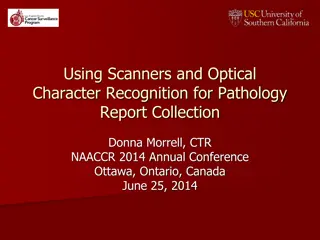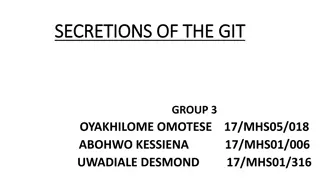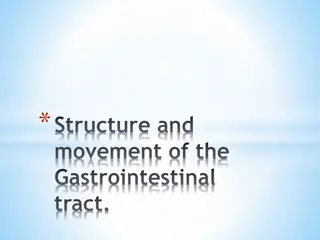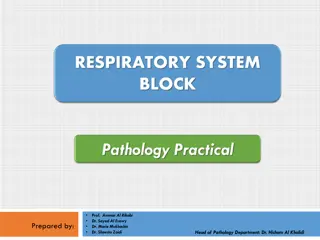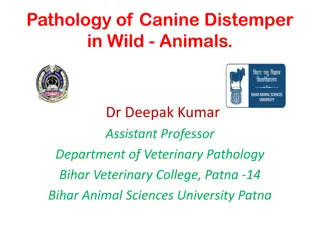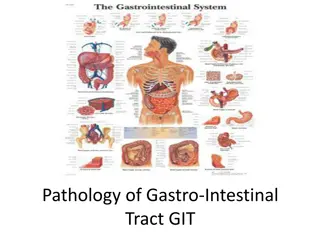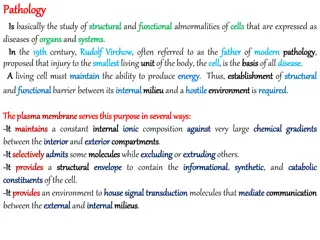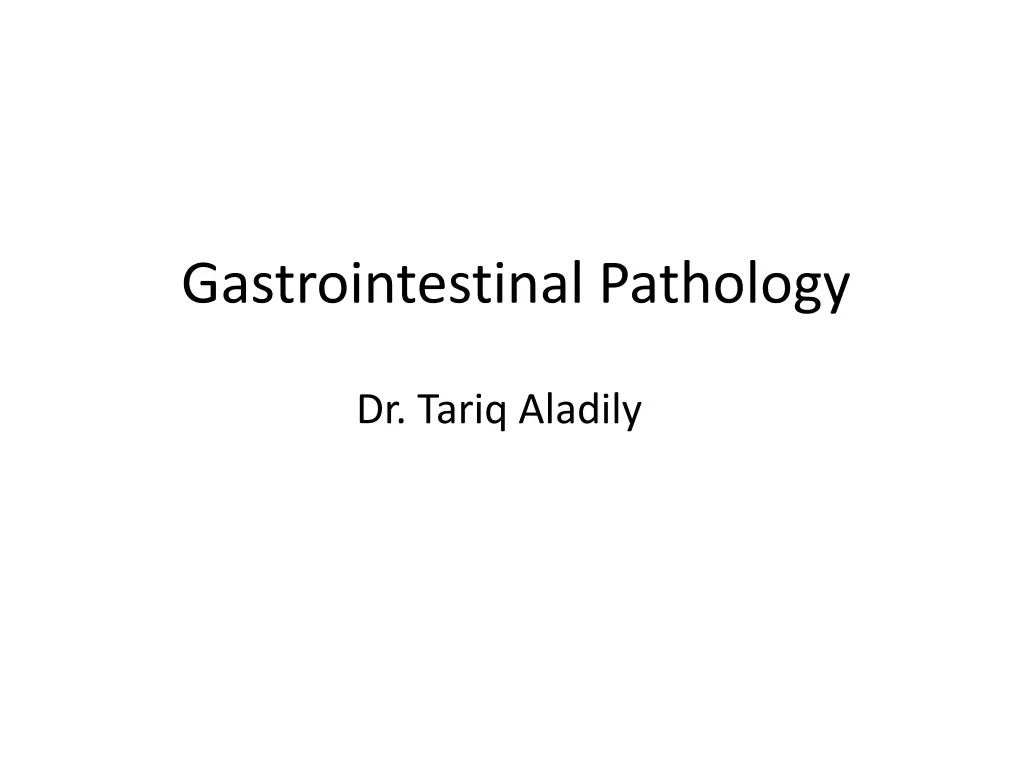
Understanding Esophageal Diseases: Symptoms and Treatment Overview
Explore a comprehensive guide on esophageal diseases including obstructive and vascular conditions, stenosis, gastroesophageal reflux disease (GERD), lacerations, chemical esophagitis, and infectious esophagitis. Learn about the causes, symptoms, and management options for these gastrointestinal issues. Images provided for reference.
Download Presentation

Please find below an Image/Link to download the presentation.
The content on the website is provided AS IS for your information and personal use only. It may not be sold, licensed, or shared on other websites without obtaining consent from the author. If you encounter any issues during the download, it is possible that the publisher has removed the file from their server.
You are allowed to download the files provided on this website for personal or commercial use, subject to the condition that they are used lawfully. All files are the property of their respective owners.
The content on the website is provided AS IS for your information and personal use only. It may not be sold, licensed, or shared on other websites without obtaining consent from the author.
E N D
Presentation Transcript
Gastrointestinal Pathology Dr. Tariq Aladily
OBSTRUCTIVE AND VASCULAR DISEASES Mechanical Obstruction Most are discovered shortly after birth, usually because of regurgitation during feeding, and must be corrected promptly a. Agenesis, of the esophagus is extremely rare b. Atresia, thin, noncanalized cord replaces a segment of esophagus, is more common
Stenosis Narrowing due to fibrosis of the esophagus Mostly due to inflammation and scarring, which may be caused by chronic gastroesophageal reflux, irradiation, or caustic injury Symptoms: dysphagia that is progressive; difficulty eating solids then for liquids
Eosophagitis 1. Gastroeospphageal Reflux Disease (GERD) The most frequent cause of esophagitis Conditions that decrease lower eosophageal sphincter tone or increase abdominal pressure; alcohol, smoking, obesity, central nervous system depressants, pregnancy, hiatal hernia In many cases, no definitive cause is identified Patients complain of heartburn (central chest pain)
2.lacerations Caused by severe vomiting (called Mallory Weiss tear) or acute alcohol intoxication Patients often present with hematemesis These tears are superficial and do not generally require surgical intervention Healing tends to be rapid and complete
3.Chemical Esophagitis Caused by alcohol, corrosive acids or alkalis, excessively hot fluids, cytotoxic chemotherapy and radiation therapy, and heavy smoking Medicinal pills may lodge and dissolve in the esophagus, rather than passing into the stomach intact, pill-induced esophagitis Symptoms: self-limited pain, particularly odynophagia (pain with swallowing) Complications: Hemorrhage, stenosis, or perforation
4.Infectious esophagitis Most frequent in those who are debilitated or immunosuppressed Herpes simplex viruses, cytomegalovirus (CMV), or fungal organisms is common (Candida)
Barrett Esophagus A complication of chronic GERD that is characterized by gastric or intestinal metaplasia within the esophageal squamous mucosa Estimated to occur in as many as 10% of persons with symptomatic GERD The greatest concern in Barrett esophagus is that it confers an increased risk of esophageal adenocarcinoma
INFLAMMATORY DISEASE OF THE STOMACH 1.Acute Gastritis and acute peptic ulcer: Transient mucosal inflammatory process May be asymptomatic or cause variable epigastric pain, nausea, and vomiting Severe cases: mucosal erosion, hemorrhage, hematemesis, melena, or, rarely, massive blood loss Can occur after disruption of any of the protective mechanisms (mucus, bicarbonate, vascular perfusion and prostaglandins) Causes: Excessive alcohol consumption, NSAIDs, radiation therapy, harsh chemicals and chemotherapy If ulceration develop, it is called acute peptic ulcer
Chronic Gastritis Symptoms and signs associated with chronic gastritis typically are less severe but more persistent The most common cause is infection with the bacillus Helicobacter pylori Other causes: Autoimmune gastritis Obesity Smoking Radiation If ulcer develops then it is called peptic ulcer
Helicobacter pylori infection Helical gram negative bacteria, acquired in childhood and then persists for decades Almost all patients with duodenal ulcers and a 90% of gastric ulcers or chronic gastritis, mostly in antrum (less acid) Inflammation destroys parietal cells, further decreasing acidity, resulting in pan-gastritis and atrophy In some patients: increased acid secretion, result in peptic ulcer disease of the stomach or duodenum, and intestinal metaplasia Due to persistent inflammation patients have increased risk of gastric cancer (carcinoma and lymphoma)
Other causes of peptic ulcer NSAID Steroids Cushing ulcer (head trauma) The imbalances of mucosal defenses and damaging forces that cause chronic gastritis are also responsible for PUD. Gastric hyperacidity is fundamental to the pathogenesis of PUD
Celiac disease Gluten-sensitive enteropathy Immune-mediated enteropathy triggered by the ingestion of gluten-containing cereals, such as wheat and barley Association with other immune diseases including type 1 diabetes, thyroiditis Gluten-free diet is the treatment of choice
Pathogenesis Changes occur in second portion of the duodenum or proximal jejunum Activation and proliferation of CD8+ intraepithelial T-lymphocytes, which become cytotoxic and damage enterocytes The histopathologic picture is characterized by increased numbers of intraepithelial CD8+ T lymphocytes, crypt hyperplasia, and villous atrophy Patients present with diarrhea, bloating, abdominal pain, anemia
Inflammatory Bowel Disease (IBD) Chronic condition resulting from inappropriate mucosal immune activation against normal bowel flora Two major types: Crohn disease and ulcerative colitis Ulcerative colitis is limited to the colon and rectum, extends only into the mucosa and submucosa, single continuous lesion Crohn disease, involves any part of gut, most commonly in ileum, frequently is transmural, multiple separate lesions







